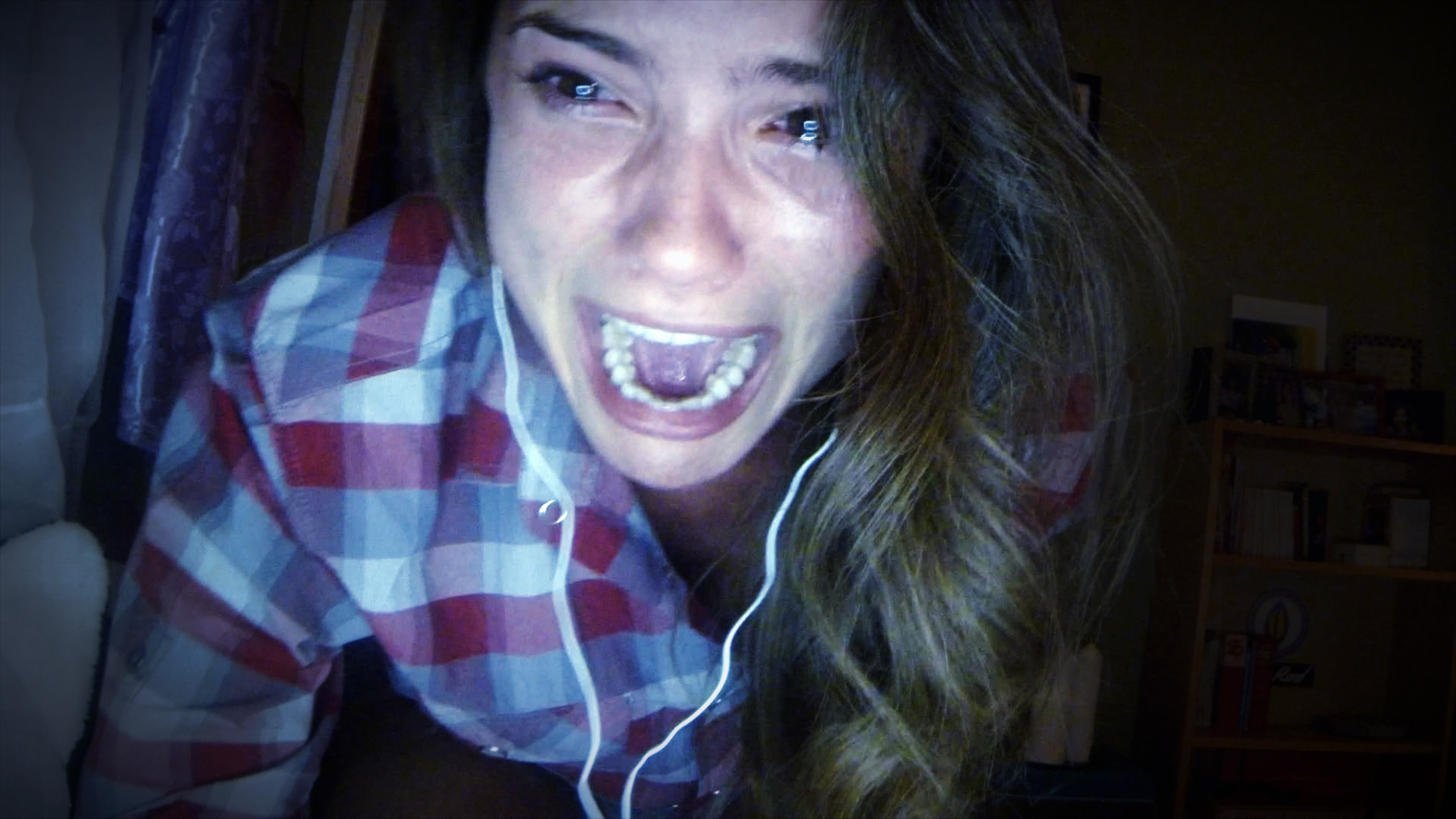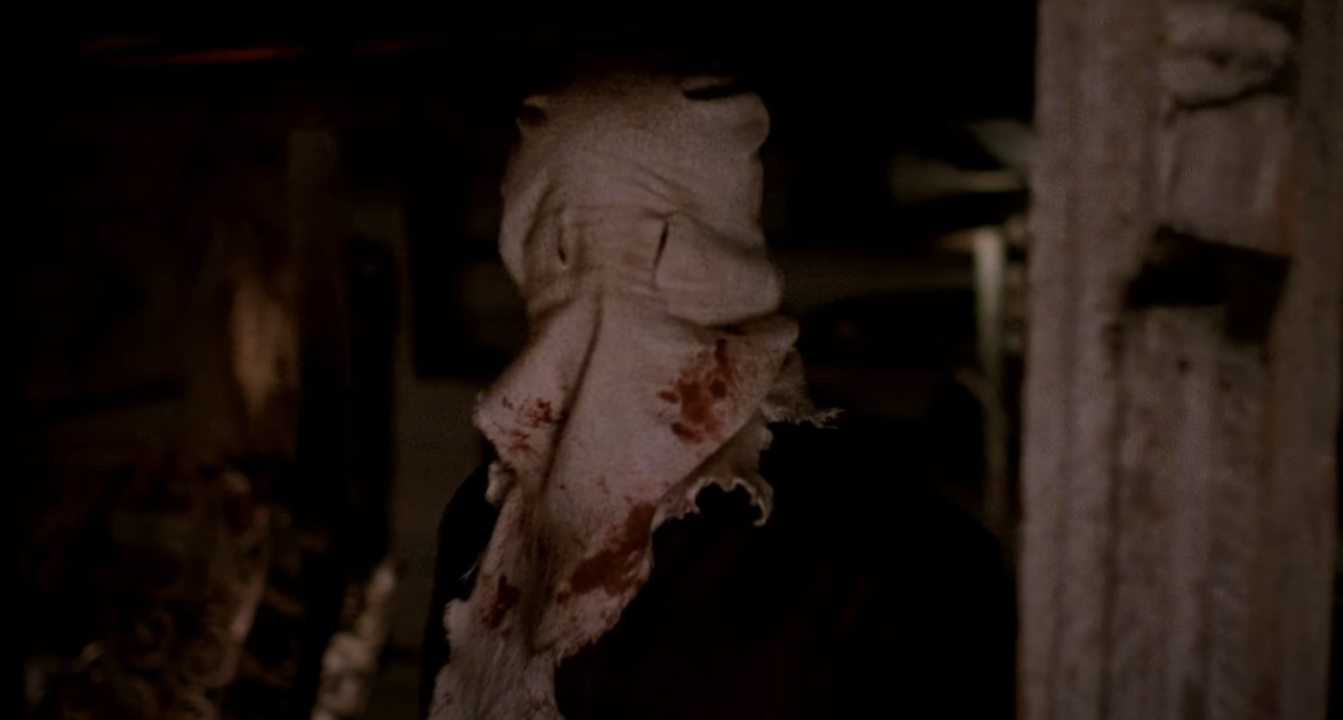Movies
[Review] ‘Unfriended’ Creates New Sub Genre of Slashers

Set entirely on a laptop over a Skype conversation between a group of teenagers, Unfriended is a better movie than it has any right to be. It’s exactly one year after Laura Barns, a local popular girl, has committed suicide on school grounds, and these kids don’t seem too bothered. Telling jokes and tossing insults back and forth, Blaire, Jess, Mitch, Adam and Ken seem more concerned with what drugs they’ll be using this weekend rather than the fact that a girl they all used to hang out with now resides deep in the dirt. It’s not until random glitches begin to interrupt their feed that a crease of worry runs across their preoccupied faces. An anonymous online friend has joined their little party, and they’re not pleased. Dismayed, they try to kick the intruder out of the group, but no matter what buttons they push or threats they shriek, their masked foe will not budge. Suddenly, Blaire and the rest of the gang are receiving odd messages, some of which are coming from their dead friend Laura’s Facebook account. She wants to know who posted the video that pushed her to take her own life, and she’s not leaving until she gets a name.
Obliterated at a high school party, Laura Barns smiles out from the screen of a secret Youtube account, rambling and cursing and falling, much to the amusement of her peers. The video jumps to a quiet corner behind a house, where Laura is now passed out in a very embarrassing manner for all the world to see. It soon becomes clear that this mean-spirited video titled “Laura Barns Kill Yourself” was the driving force that led a lonely little girl to call it quits in front of all her friends. Despite this final attempt to bring attention to the atrocities that torment school kids all over the country everyday, here we are, one year later, and the impact left behind looks minimal at best. That is, until Laura’s ghost traps all of her old buddies in an online chat room and begins picking them off, one by one. Laura’s tired of the secrets. That’s why she’s bringing everyone’s truths to light by enlisting her fellow privileged friends in a deadly game of “never have I ever”, until every last omission is surfaced and her spirit can finally rest.
Overstimulation in our absurdly technologically advanced society has lead to a loss of self, as we engulf our eyes in Androids, iPhones, Kindles, iPads, and any other portable computer we can get our impatient hands on. Instant gratification has us ignoring our friends as they sit across from us, staring at our phones instead, choosing online programming over personal interactions. Each year we disconnect from our peers a little more, transforming into emotionless zombies who care more about how many “likes” we get on a video we posted online of our drunk friend, rather than what the repercussions of our harassment might be. Unfriended could have been a much more in depth look at the effect of our dependence on technology in the modern world, and how it’s turned us all into mindless drones eternally plugged into our computers, but sadly, it’s almost entirely without such insightful commentary.
Just like The Blair Witch Project is not the first found footage film to ever exist, and Halloween is not the first slasher, Unfriended is not the first film to take place entirely on a computer screen, but it will be the one to change the way films are made. Whereas certain effects in Nacho Vigalondo’s Open Windows supposedly generated by the villain through computers and cameras make the viewer question the reality of the film, every shot in Unfriended is accounted for. Paranormal Activity 4 and Joe Swanberg’s segment in V/H/S (“The Sick Thing That Happened To Emily When She Was Younger”) both attempted to film horror movies primarily through a webcam, but both felt somewhat unrealistic in their approach. Where Unfriended succeeds where others have failed is in its contained setting and its attention to detail. All of the kids stay at home, mostly in the same rooms, for the entire eighty minute runtime, which means never having to explain why they’re carrying their laptops around with them outside, thus allowing the film to maintain its realistic facade. Also helping hold the veil of reality in place are the tiny components within the computer screen. Every open tab, every comment on every social media account, and every photo that appears on the screen is accurate according to the characters in the film. Even if a page is only maximized for a single moment, every line written is a believable statement that a person would really write on a Facebook, or a song that said character would actually listen to. It’s small details like these that all add up to help take a subpar film to the next level, and it’s greatly appreciated for cinephiles like me, who at this point, can’t help but notice all of the micro makings of a movie.
Whether you’re a fan of the film or not, the fact is that Unfriended is laying the groundwork for an entire new sub genre of horror movies to come. This film is a goofy, mediocre argument against cyber bullying, but that doesn’t change the fact that we’ll probably see more movies like this one in the near future. As the world moves away from tangible, physical objects and further into virtual reality, online revenge thrillers are simply inevitable, and writer Nelson Greaves’ timing couldn’t be more perfect. When camp grounds and suburban neighborhoods have become cliche as landmarks in the slasher universe, the only real territory that hasn’t been completely trampled is the internet. Unfriended might not be the most thoughtful film about millennial teenagers to ever exist, but it gets points for its innovative nature and surprisingly creepy moments. This is definitely a flick you’ll want to catch if you want a peek at what’s ahead for the future of cinema.

Editorials
‘Malevolence’: The Overlooked Mid-2000s Love Letter to John Carpenter’s ‘Halloween’

Written and Directed by Stevan Mena on a budget of around $200,000, Malevolence was only released in ten theaters after it was purchased by Anchor Bay and released direct-to-DVD like so many other indie horrors. This one has many of the same pratfalls as its bargain bin brethren, which have probably helped to keep it hidden all these years. But it also has some unforgettable moments that will make horror fans (especially fans of the original Halloween) smile and point at the TV like Leonardo DiCaprio in Once Upon a Time in Hollywood.
Malevolence is the story of a silent and masked killer told through the lens of a group of bank robbers hiding out after a score. The bank robbery is only experienced audibly from the outside of the bank, but whether the film has the budgetary means to handle this portion well or not, the idea of mixing a bank robbery tale into a masked slasher movie is a strong one.
Of course, the bank robbery goes wrong and the crew is split up. Once the table is fully set, we have three bank robbers, an innocent mom and her young daughter as hostages, and a masked man lurking in the shadows who looks like a mix between baghead Jason from Friday the 13th Part 2 and the killer from The Town That Dreaded Sundown. Let the slashing begin.
Many films have tried to recreate the aesthetic notes of John Carpenter’s 1978 classic Halloween, and at its best Malevolence is the equivalent of a shockingly good cover song.
Though the acting and script are at times lacking, the direction, score, and cinematography come together for little moments of old-school slasher goodness that will send tingles up your spine. It’s no Halloween, to be clear, but it does Halloween reasonably proud. The nighttime shots come lit with the same blue lighting and the musical notes of the score pop off at such specific moments, fans might find themselves laughing out loud at the absurdity of how hard the homages hit. When the killer jumps into frame, accompanied by the aforementioned musical notes, he does so sharply and with the same slow intensity as Michael Myers. Other films in the subgenre (and even a few in the Halloween franchise) will tell you this isn’t an easy thing to duplicate.
The production and costume designs of Malevolence hint at love letters to other classic horror films as well. The country location not only provides for an opening Halloween IV fans will appreciate but the abandoned meat plant and the furnishings inside make for some great callbacks to 1974’s The Texas Chain Saw Massacre. All of this is buoyed and accentuated by cinematography that you rarely see in today’s low-budget films. The film is shot on 35mm film by A&E documentary filmmaker Tsuyoshi Kimono, who gives Malevolence an old-school, grainy, 1970s aesthetic that feels completely natural and not like a cheap gimmick.

Malevolence is a movie that no doubt has some glaring imperfections but it is also a movie that is peppered with moments of potential. There’s a reason they made a follow-up prequel titled Malevolence 2: Bereavement years later (and another after that) that starred both Michael Biehn and Alexandra Daddario! That film tells the origin story of our baghead, Martin Bristol. Something the first film touches on a little bit, at least enough to give you the gist of what happened here. Long story short, a six-year-old boy was kidnapped by a serial killer and for years forced to watch him hunt, torture, and kill his victims. Which brings me to another fascinating aspect of Malevolence. The ending. SPOILER WARNING.
After the mother and child are saved from the killer, our slasher is gone, his bloody mask left on the floor. The camera pans around different areas of the town, showing all the places he may be lurking. If you’re down with the fact that it’s pretty obvious this is all an intentional love letter and not a bad rip-off, it’s pretty fun. Where Malevolence makes its own mark is in the true crime moments to follow. Law enforcement officers pull up to the plant and uncover a multitude of horrors. They find the notebooks of the original killer, which explain that he kidnapped the boy, taught him how to hunt, and was now being hunted by him. This also happened to be his final entry. We discover a hauntingly long line of bodies covered in white sheets: the bodies of the many missing persons the town had for years been searching for. And there are a whole lot of them. This moment really adds a cool layer of serial killer creepiness to the film.
Ultimately, Malevolence is a low-budget movie with some obvious deficiencies on full display. Enough of them that I can imagine many viewers giving up on the film before they get to what makes it so special, which probably explains how it has gone so far under the radar all these years. But the film is a wonderful ode to slashers that have come before it and still finds a way to bring an originality of its own by tying a bank robbery story into a slasher affair. Give Malevolence a chance the next time you’re in the mood for a nice little old school slasher movie.
Malevolence is now streaming on Tubi and Peacock.












You must be logged in to post a comment.